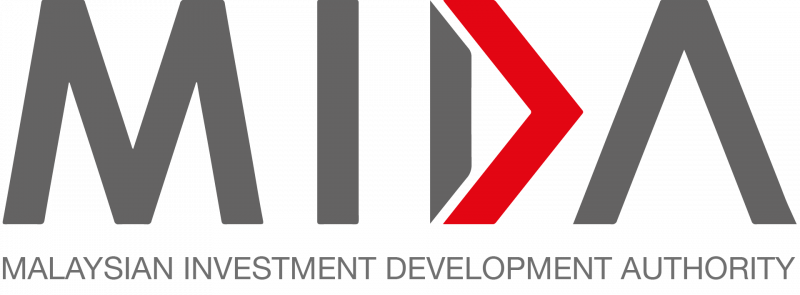Young, dynamic and fast, the region has unique advantages, supported by investment in infrastructure, talent, policy and collaboration.
IN the global race for artificial intelligence development, Southeast Asia is emerging as an unexpected contender. Traditionally, discussions around AI innovation have focused on the United States and China, but South-east Asia’s unique combination of adaptability, dynamism and strategic investments is positioning it as a critical player in shaping the AI landscape.
Characterised by targeted investments in infrastructure, localised innovation and government-backed strategies to foster growth, the region is narrowing the gap by establishing Ai-ready data centres, creating tailored language models and encouraging cross-sector collaboration. Its focus on addressing real-world challenges also makes it a player to watch.
The region is one of the world’s most economically significant, and its young and burgeoning middle class of 200 million people is the driving force behind its rapid digital transformation. Last year, Southeast Asia’s digital economy achieved Us$11bil (Rm49.4bil) in profits, up from Us$4bil just two years before. By 2050, Indonesia is projected to become the world’s fourth-largest economy, while Malaysia and Thailand are expected to have economies exceeding US$1 trillion (RM4.5 trillion) each.
Substantial investments in digital infrastructure underpin this growth. In the first half of last year alone, over Us$30bil (Rm134.6bil) of investments were committed to building Ai-ready data centres in Singapore, Malaysia and Thailand.
These efforts are creating advanced computing capabilities and positioning the region as a global leader in Ai-driven innovation. Fuelled by a digitally adept population, countries and businesses are seeking AI solutions to address societal and industrial challenges.
South-east Asia is carving a unique niche in AI by focusing on both practical applications and collaborative innovation across industries such as logistics, healthcare and education. AI start-ups in the region are working on solutions that can enhance operational efficiency and safety compliance.
One such example is Seewise, an Ai-powered factory monitoring tool that uses computer vision and machine learning to improve productivity and quality in real-time. Similarly, Heyhi, an educational technology pioneer, combines AI and data to deliver personalised learning experiences while automating grading and reporting tasks for educators.
These innovations are not just transforming local markets but also gaining traction globally, with the region being recognised for its ability to move quickly.
A report by Singapore-owned investment company Temasek Holdings, Google and global consultancy Bain & Company found that businesses in South-east Asia can transition from idea to full-scale production in under six months, with 70% of organisations achieving a return on investment within a year of implementation.
This efficiency is not unique to the region. What sets South-east Asia apart is its focus on partnerships between regions and industries, which are key for start-ups. For instance, the Asean committee on science, technology and innovation has an AI cooperation framework to develop and collaborate on AI across the members of Asean.
Private-sector efforts, such as Nvidia’s partnership with the Vietnamese government to establish an AI research and development centre, reinforce these trends and help translate AI research into high-impact solutions.
Strategic initiatives from governments and private-sector stakeholders are fostering innovation through robust governance frameworks and talent development programmes. Asean’s AI governance guide, for example, advocates a coordinated approach to regulatory challenges, while programmes aimed at upskilling talent are laying the foundation for sustainable growth.
Governments are implementing frameworks for responsible AI. For instance, Singapore’s model AI governance framework promotes ethical AI practices, while initiatives like AI Trailblazers, led by Google Cloud and government body Digital Industry Singapore, empower organisations to develop and deploy real-world AI solutions rapidly. This balance between innovation and accountability is enabling South-east Asia to scale up AI solutions effectively, meeting both local needs and global expectations.
Despite its potential, however, South-east Asia still faces several challenges, with talent shortages a significant hurdle. Globally, up to 70% of data, security and development roles are estimated to be going unfilled. This gap is compounded by the region’s demand for both technical expertise in building AI systems and the domain-specific knowledge needed to implement them effectively.
Infrastructural disparities present another obstacle. While Singapore leads with its advanced data centres and frameworks like the national AI strategy, there is uneven digital development and inconsistent regulatory capacities across the rest of the region. Malaysia, Indonesia and Thailand, for instance, is in the bottom half of the AI preparedness rankings compiled by US software company Salesforce on 12 countries across the Asia-pacific – which Singapore tops.
The challenges some nations face in catching up include high adoption costs, particularly for small and medium-sized enterprises, and limited access to localised AI solutions, which are vital in a region with over 1,000 languages and many diverse cultures.
Efforts to address these issues include Ai-driven platforms designed to optimise supply chains and improve productivity in manufacturing and healthcare.
Cross-border hiring is also an emerging strategy, with countries like Indonesia and Vietnam supplying skilled professionals to meet growing demand.
At the same time, localised AI models are being developed to address linguistic and cultural barriers. Sony Research, for instance, has a partnership with AI Singapore to create a Southeast Asian family of large language models.
As AI adoption becomes mainstream, South-east Asia’s potential in the AI race is undeniable. Realising this potential, however, will require sustained investment in infrastructure, talent and policy support.
Collaboration, both within the region and with global partners, will remain critical. By embracing its unique strengths and addressing its challenges head on, South-east Asia is poised to not only catch up with established AI powerhouses but also set a new standard for innovation, regulation and impact.
Source: The Star/ South China Morning Post
Next AI powerhouse: SE-Asia
Content Type:
Duration:


